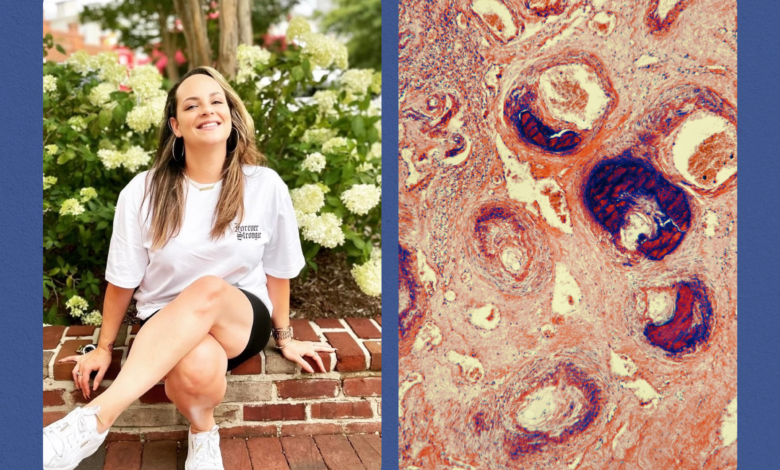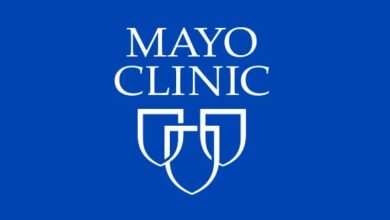I Was Told I Had an STI. It Was Actually Cervical Cancer

Aisha McClellan, 39, from Chapel Hill, North Carolina, was diagnosed with metastatic cervical cancer when she was just 32. Now, she spreads awareness about the disease on TikTok. Cervical cancer is usually preventable if you get the HPV vaccine, routine tests for the virus (the vaccine doesn’t protect against every single type), and regular Pap smears (to screen for precancerous cells). Here’s her story, as told to SELF’s associate health conditions director Julia Sullivan.
As a single parent of three, I’ve always been super active and involved in my kids’ lives. However, I’ve struggled a bit. We live on very little income, and I don’t really have any people around to help. However, I’m diligent about the health of my entire family—I’ve never slacked in that department. And that means I need to look after myself, too. I go in regularly for all my screenings, which include Pap smears. I had my first abnormal result back in 2011, but after doing a colposcopy, my doctor found no issues. [Editor’s note: A colposcopy is a procedure to closely examine a person’s cervix, vagina, and vulva to look for cancerous cells.] I’ve never had an HPV vaccine and the doctors treating me never offered me an HPV test (and I never knew to ask for one). They just told me that I needed to come in regularly to get more Paps. Sometimes I’d continue to get abnormal results, but my doctors told me this kind of thing was to be expected. I was never really worried.
In early 2016, I bled for about 10 minutes right after having sex. It happened again a second and a third time, so I went to a local clinic to get checked out. The staff tested me for STIs and put me on a 10-day course of antibiotics (even with no positive result for an infection). It felt weird that they didn’t want to give me a pelvic exam. When I got back home, I felt off. Usually, I’m up at 6 a.m. singing—I’ve always been high-energy. I felt fatigued but wondered if it was just a side effect of the medication. I eventually felt odd back pain, too, so I went back to the clinic with my concerns. The staff told me I just needed to give some time for the antibiotics to kick in.
After I finished those meds, I started bleeding after sex again. I still felt exhausted and my back was killing me. Then a friend told me I looked gray and that I should go back to the clinic—which is exactly what I did. I basically demanded to receive a pelvic exam. A nurse practitioner told me that my cervix looked “angry and inflamed,” but also said it was probably some sort of STI. I told her, “Listen, I just don’t think that’s what this is. I really don’t.” They brought in a different nurse practitioner who saw what might be a mass on my cervix. I asked her, “So, do you think it’s cancer?” She said she couldn’t tell exactly what it was, but she suggested I get a biopsy at another facility (they didn’t offer this test at the clinic). Since I was uninsured, they gave me a number for my local hospital. Trying to get that biopsy appointment was a nightmare—you could only call at certain times, and the hospital would only have a few appointments per day. I’m like, ‘Okay, I might have cancer. Maybe I can get a biopsy, or maybe not, depending on how lucky I get.’ I couldn’t get an appointment with the hospital, so I called every clinic within a freaking 50-mile radius to see if someone would see me.
I finally found a clinic with a doctor who examined me, rushed my biopsy, and called me with the results the same day: I had cervical cancer, specifically a cancerous mass that wasn’t picked up on previous screenings. I was extremely stressed and scared, but I immediately went into problem-solving mode. I was like, ‘This sucks, but just like I didn’t know how I’d pay my power bill last month, I’d figure this out.’ I was more concerned about the financial aspect—the doctors told me I would need to have radiation almost every single day and chemotherapy once per week for three months, and that I couldn’t work as much during that period. Still, they assured me that they dealt with this type of cancer all the time and that I shouldn’t be too concerned. But the treatment wiped me out. I’d put my kids to bed and then literally sit in the bathtub and cry. However, I kept reminding myself that it was just three months—I could do anything for three months.
On November 8th, 2016—Election Day—I went in for a follow-up. A resident sat with me in the waiting room before the doctor came in. He was somber, saying “You’re so young,” to which I responded, “Thanks, how old are you?” Then he started to cry, telling me that the cancer had metastasized, and had spread to my lungs and liver. The actual doctor finally came in, put his hand on my shoulder, and repeated the news. He told me they’d only been scanning my abdomen and pelvis throughout treatment, so they didn’t realize the cancer had spread. I was told there wasn’t much they could do for me at that point—the doctor gave me as many as 24 months left to live, and as little as 90 days if I didn’t get treatment. I was so angry. How did my symptoms keep getting overlooked? A very nice nurse had to walk me back out to my car—I was absolutely hysterical. Who would take care of my kids? That really screwed me up, because nobody’s going to love your children the way you do. But I had to keep trying. I had to be here for them, so my mindset quickly shifted. That night, I mass-emailed every oncologist I could find. I needed a second opinion.
Eventually, one doctor responded and offered to examine me. She said, “It doesn’t look great, but you’re 32, which makes me think you’re young enough to withstand the treatment. You’re a mom. We should try.” She kept me on the same chemo-radiation regimen I had with my previous doctor, but without the ticking time bomb on my back—she didn’t give me a definite amount of time to live. I wanted things to be as normal as possible for my kids, who were in middle school at the time. I was losing all my hair and facing the idea of dying, but I’d put on a wig, draw on some eyebrows, and throw on a baseball cap. I tried my best to be there for them as much as I could.
As I continued treatment over the next few months, a somewhat miraculous thing happened: I started showing signs of improvement. By August 10th, 2017, my doctor called to say that I’d had a complete response to the treatment. I was with my coworker at the time, and we both went to the roof of our work building and screamed and cried. She said, ‘Go call your babies!’ It was the best day I could have never imagined.
Still, my heart was breaking for all the people who’ve ever been diagnosed with cervical cancer. When I first received this diagnosis, I thought people would look down on me or assume I was promiscuous because HPV—even though it’s a super common virus that almost everyone gets at some point—is sexually transmitted. Sometimes I wouldn’t tell others that I had cervical cancer—just that I had cancer—so I wouldn’t be judged. But when a friend told me that she hadn’t had a Pap smear in six years, I realized it was a huge disservice not to bring awareness to this disease, its symptoms, and the importance of screenings—which is why I’ve dedicated my platform on TikTok to normalizing these conversations. Like everyone else who’s been diagnosed with cervical cancer, there’s nothing I did to cause this. There’s nothing wrong with me. If you get health news like this, you just have to believe you’re going to be okay and lead with that. Be kind to your body so you can give yourself the best chance of success.
Related:

